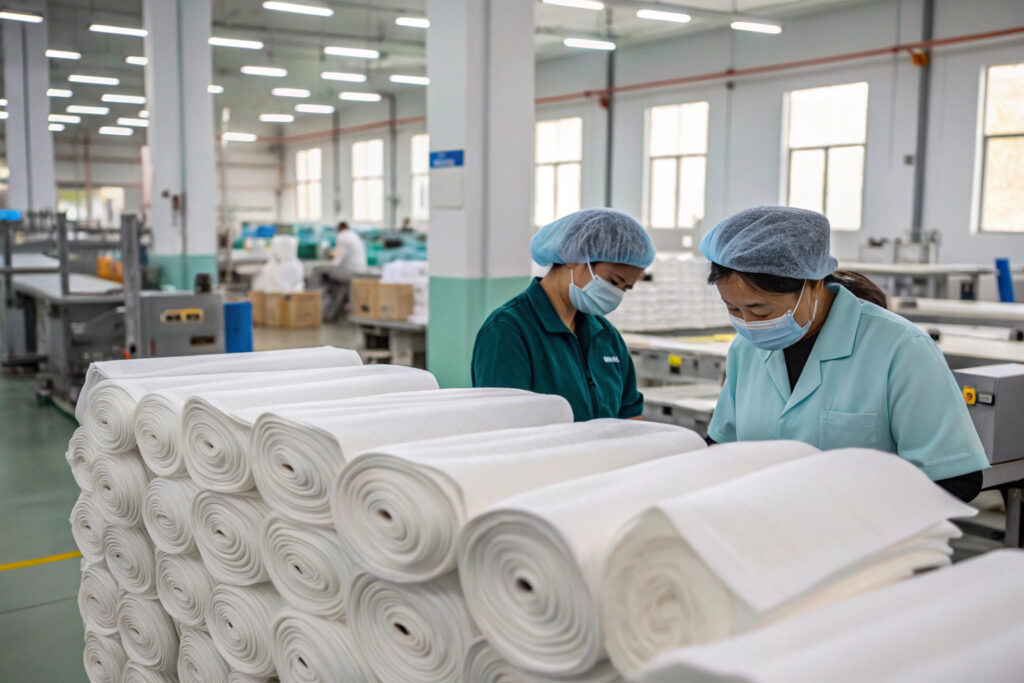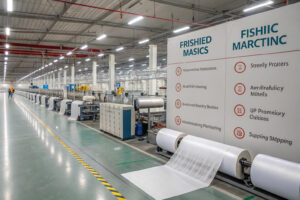In the post-COVID world, fabric face masks have evolved from emergency protective gear to daily essentials. Buyers like Ron in the U.S. aren't just looking for basic masks anymore—they want products that offer comfort, breathability, and gentle skin contact. Whether for personal use, resale, or integration into fashion lines, the fabric blend behind a mask can make or break its appeal. But with hundreds of materials available, how do you know which fabric blends are truly best?
The answer lies in combining softness with function. The best blends for skin-friendly fabric masks often pair cotton, modal, bamboo, or spandex to strike a perfect balance between feel, flexibility, and durability.
If you’re sourcing from China, especially from mask-focused hubs like Keqiao, understanding fabric compositions can help you negotiate better with manufacturers and make smarter inventory decisions. This blog explores which fabric blends deliver that coveted soft, breathable, and skin-loving experience—and how your brand can benefit from choosing the right ones.
Which Cotton Blends Provide the Best Skin Feel?
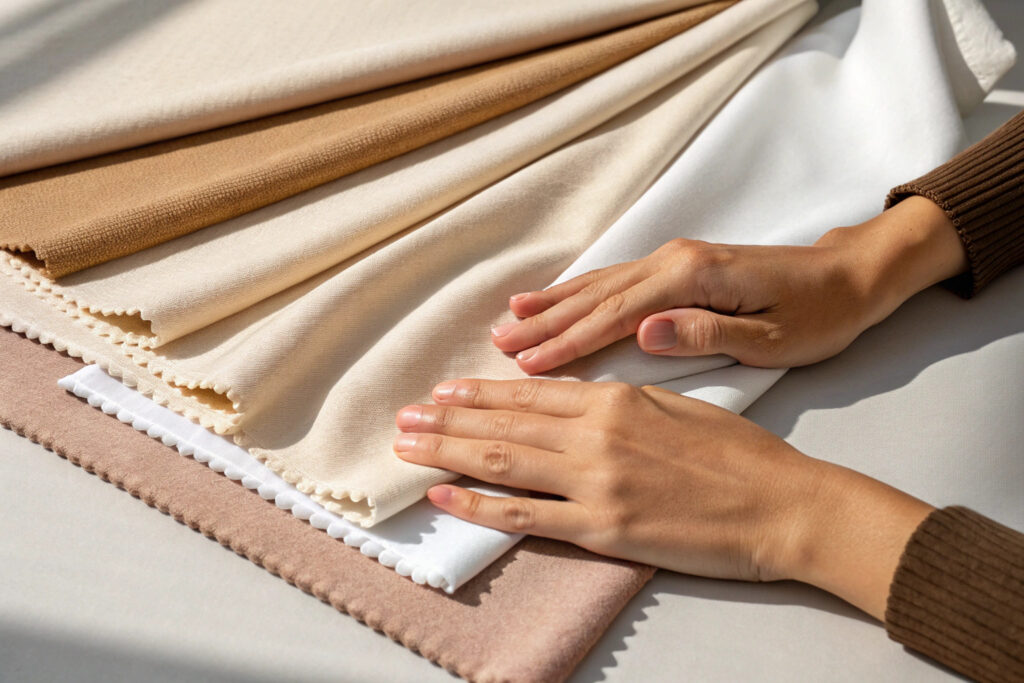
Why Is Cotton Still the King of Mask Fabrics?
Cotton remains the most popular material for cloth masks due to its natural softness, skin-friendliness, and breathability. When blended with other fibers, cotton can maintain its comfort while gaining new functionalities. Our American clients often tell us their customers prefer cotton-rich masks, especially for prolonged wear in offices, schools, or flights.
For instance, a cotton-modal blend offers exceptional drape and softness, making it ideal for sensitive skin. Meanwhile, cotton-spandex mixes enhance stretchability and facial fit, boosting comfort for long hours. We often recommend 60% cotton with 40% modal or 95% cotton with 5% spandex as standard blends for everyday usage.
You can read more about the benefits of cotton blends in face masks and how they’re evaluated in lab tests.
Another advantage of cotton-based blends is high dyeability—ideal for fashion-oriented mask designs. For example, when we worked with a startup selling tie-dye reusable masks in California, we used a 70/30 cotton-modal blend to balance softness and visual appeal. Their return rate dropped by 40% post-switch.
Learn more about tie-dyeing fabric techniques on cotton-modal for your product development.
What Makes Modal a Game-Changer in Blends?
Modal, a semi-synthetic fiber derived from beech trees, is known for being even softer than cotton and naturally moisture-wicking. When we incorporate modal into our fabric masks, customers instantly notice the smoothness. The tactile feedback is especially appealing to users with eczema-prone or sensitive skin.
A key advantage of modal is that it resists hardening over time. Even after 50+ machine washes, modal retains its buttery handfeel. For premium collections or designer face masks, cotton-modal-Lycra tri-blends provide flexibility, luxury, and skin protection in one.
We have several customers in Europe and the U.S. who prefer modal-heavy masks for high-margin segments like fashion or yoga-wear accessories. Modal also dyes well, offering deep colors without fading, especially when pre-washed properly.
See the differences between modal and other cellulosic fibers when choosing blends for durability and comfort.
Are Bamboo Fabrics Really Better for Sensitive Skin?
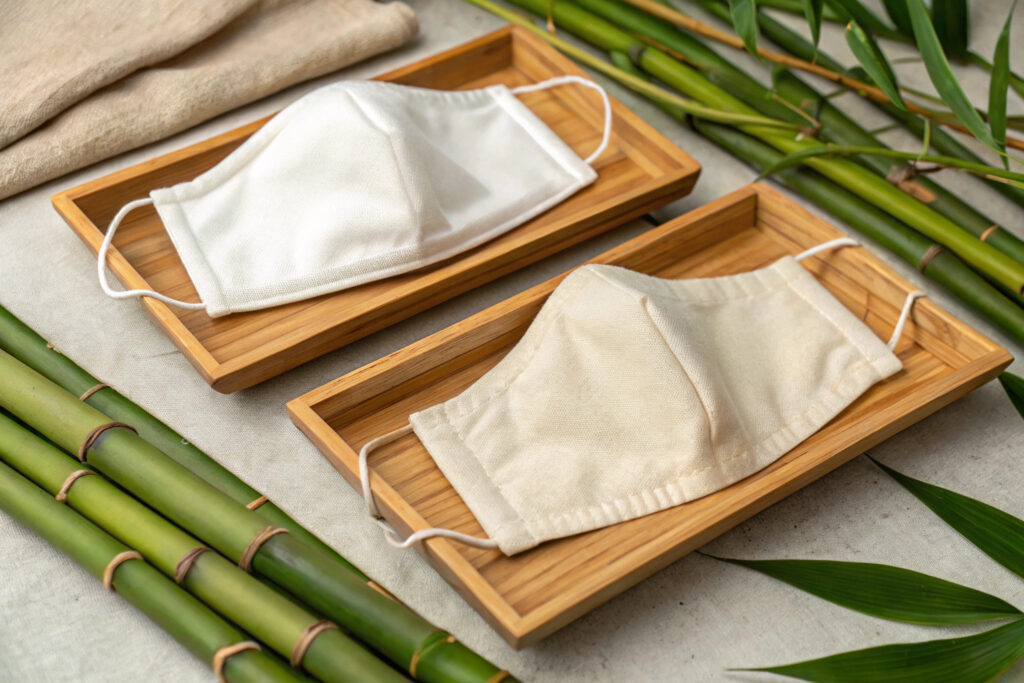
What Are the Skin Benefits of Bamboo-Based Blends?
Bamboo fabrics are increasingly favored by wellness and skincare-conscious consumers due to their hypoallergenic and antimicrobial properties. When blended with cotton or spandex, bamboo fabrics offer softness, temperature regulation, and reduced friction against skin.
We’ve found that bamboo-viscose blended with cotton (e.g., 70% bamboo, 30% cotton) makes for a silky, moisture-absorbent, and breathable mask. These are ideal for children’s masks, summer-use designs, or long-haul flights. Many of our American clients dealing in organic or sustainable accessories request bamboo blends for premium product lines.
According to Good On You’s sustainability analysis, responsibly made bamboo fabric also carries strong environmental branding appeal—making it a marketing win for eco-driven sellers.
Do Bamboo Fabrics Retain Their Softness After Washing?
One concern often raised about bamboo is its durability after multiple washes. In pure form, bamboo viscose can become stiff or pill over time. That’s why we always recommend blending with cotton or Lycra to maintain softness and elasticity.
We conducted a 30-wash test comparing 100% bamboo vs bamboo-cotton-spandex blends. The pure bamboo mask showed 20% shrinkage and slight pilling, while the blended version maintained over 90% softness and fit integrity.
To optimize longevity, we also apply enzyme wash finishes on bamboo fabric masks, which smooth out fibers and prevent fuzzing. This is a value-add Ron and other U.S. customers appreciate when packaging high-quality mask lines.
Discover more about enzyme washing on bamboo fabric and how it can improve your product quality.
How Does Spandex Add Comfort Without Compromising Skin Feel?
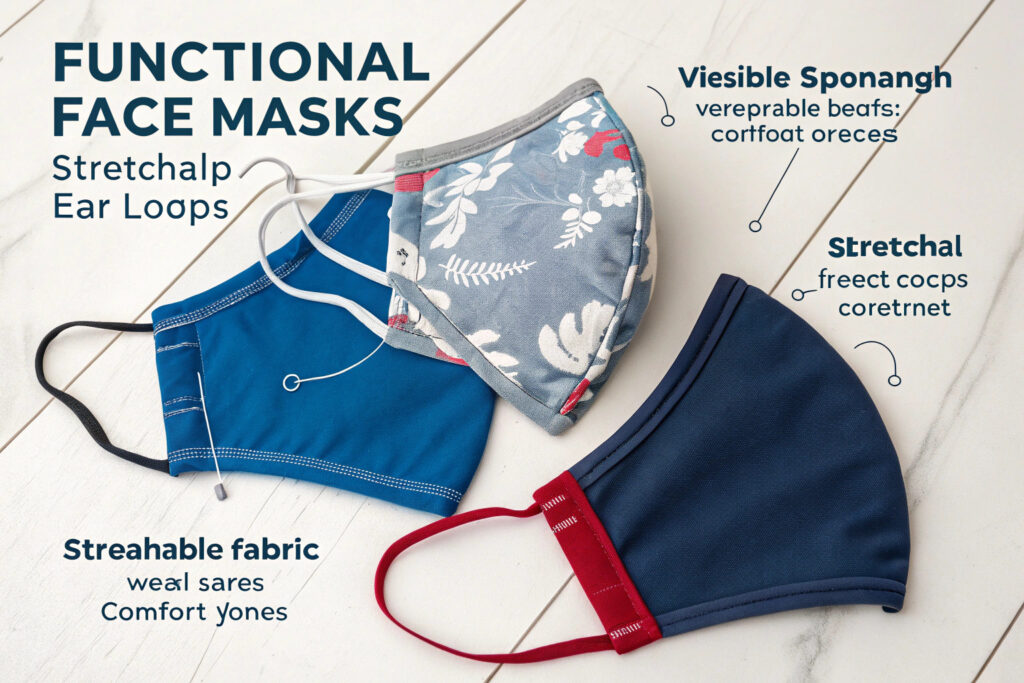
Why Add Spandex to Fabric Masks?
Spandex (also known as elastane or Lycra) offers elasticity that dramatically improves mask fit, comfort, and reusability. On its own, spandex is too tight for skin—but in small percentages (typically 3% to 8%), it transforms the overall user experience of a mask.
In our production line, we use spandex primarily in ear loops, binding edges, or full fabric blends like polyester-cotton-spandex. This ensures masks adapt to different face shapes without pressure lines or discomfort.
A stretchable blend is especially useful in sports masks or children’s masks, where movement is frequent and flexibility is crucial. We recently partnered with a U.S. activewear brand to produce over 100,000 units of 92% cotton, 8% spandex contour masks—optimized for gym use.
Learn how Lycra-enhanced fabrics are redefining fit in performance apparel and mask applications.
Is There a Risk of Allergies with Spandex?
While rare, some users experience irritation from direct contact with synthetic fibers like spandex or polyester. However, this can be avoided with double-layer designs, where the inner layer touching the face is made of pure cotton or modal, and the outer layer contains the stretch material.
This layered approach ensures skin safety without sacrificing form. For instance, our 3-layer contour mask uses: 1) 100% cotton inside, 2) spandex blend middle layer, 3) water-repellent outer layer.
We also recommend performing OEKO-TEX Standard 100 testing for all stretch fabrics to confirm skin safety. We support third-party lab tests to help clients ensure compliance with OEKO-TEX requirements.
Should You Choose Organic or Recycled Blends?
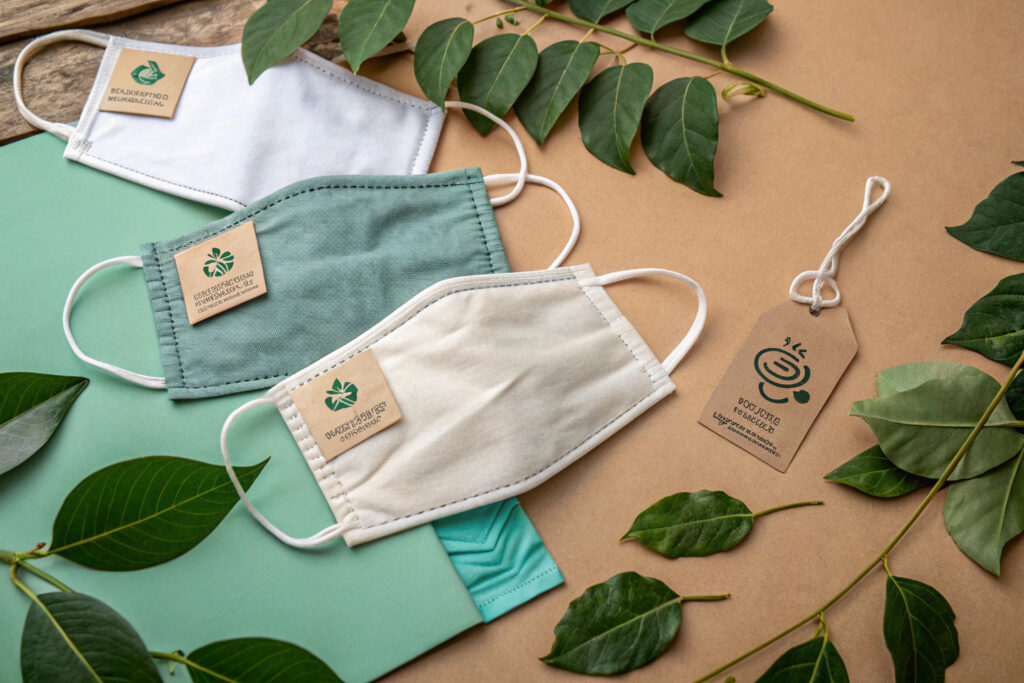
What Makes Organic Cotton Blends Popular in the U.S.?
As sustainability becomes a key driver in fashion and accessories, organic cotton is gaining ground in face mask production. Certified organic cotton is grown without harmful chemicals, making it safer for the skin and environment.
When blended with bamboo, modal, or recycled polyester, it creates a soft yet sturdy fabric that aligns with consumer values. At ChinaClothMask, we offer GOTS-certified organic cotton masks blended with recycled materials, often requested by eco-focused retailers in California and New York.
Using organic blends helps your product stand out in green marketplaces like Etsy or Amazon Eco sections, and reduces exposure to toxic dye residues.
How Do Recycled Polyester Blends Balance Comfort and Cost?
Recycled polyester (rPET) is widely used in sustainable textiles and offers decent softness, especially when brushed or blended with cotton/modal. It’s durable, cost-effective, and aligns with green product storytelling.
A popular configuration we use is 60% recycled polyester + 35% organic cotton + 5% spandex—delivering eco-credentials, stretch, and comfort. For brands selling in large volume or targeting ESG-conscious markets, rPET blends offer great cost-performance ratio.
We help brands verify their recycled content using GRS certification, which you can learn more about via Textile Exchange.
We also apply QR tracking on recycled mask batches to enable transparency in your supply chain storytelling—perfect for brands that want to showcase sourcing integrity.
Conclusion
Choosing the right fabric blend for skin-friendly cloth face masks is more than just a comfort decision—it’s a strategic one. Cotton-modal blends excel in softness, bamboo mixes cater to sensitive skin, spandex adds flexibility, and organic or recycled blends align with today’s sustainability standards. As a manufacturer rooted in Keqiao’s textile heartland, we combine these fabrics with advanced quality control and agile production to serve customers like Ron across the U.S. and beyond.
If you’re looking to develop your own custom cloth face mask line that’s breathable, soft, and optimized for both user experience and global compliance, Shanghai Fumao is ready to help. Contact our Business Director Elaine at elaine@fumaoclothing.com to start your fabric mask project today.

